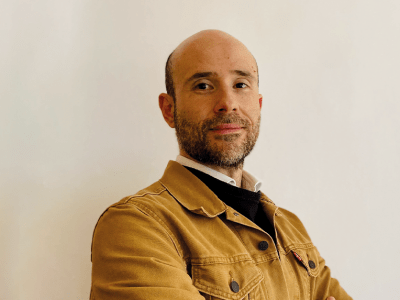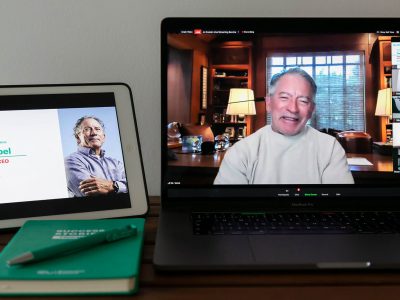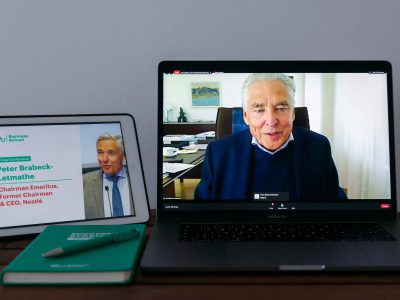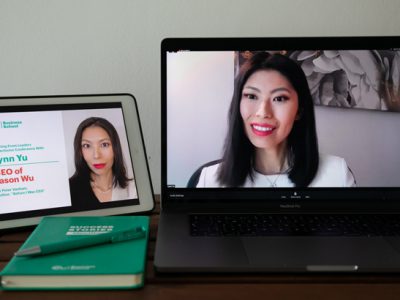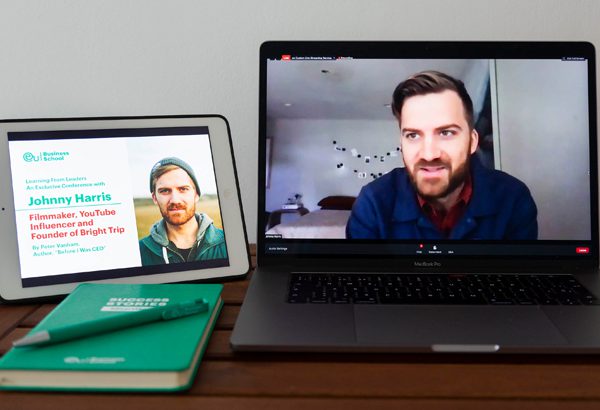Personal Branding, a Key Communication Tool With Christina Richter
Christina Richter began her career in traditional public relations; however, she has recently transitioned to work as a consultant on a freelance basis. She has over 15 years of experience in communications, public relations, content strategy, social media and personal branding. Her current job title is Communications and Personal Branding Strategist.
Christine spoke to EU Business School students about the importance of developing their personal brand and how they could use LinkedIn – the best online platform for business – to do this.
What is your Personal Brand?
Christina used a Jeff Bezos quote to define personal brand: “It’s what people say about you when you’re not in the room.”
Your personal brand is not solely what you do professionally. It also consists of your background, your industry know-how, your interests and voluntary commitments, your passions and your network.
To begin defining your personal brand, Christina suggested asking yourself the following questions:
What are my skills and experience?
What is the industry I work in or want to work in?
What are my personal values?
Who are the people that I want to address?
She also used the example of a conference to guide the direction in which you should take your personal brand. You should imagine that you’ve been asked to speak at a business event and consider what topic you’d talk about, the approach you’d take and who you’d want to be in the audience. You should then imagine LinkedIn is a 24/7 conference and address it accordingly.
Why Is Your Personal Brand Important?
Whether we cultivate it or not, we all have a personal brand.
It’s a shame to neglect the opportunities that building a strong personal brand can bring, but it’s even worse to have a toxic personal brand without realizing it. Whenever your name is recommended to a potential employer or partner, the first thing they will do is Google you. Refining your personal brand is one way to take control over what they find when they do.
Today, anyone can brand themselves as an expert. That means you don’t have to wait until you’re a polished final product to start raising your visibility. You don’t have to lie about your situation either. Instead of portraying yourself as an expert when you’re not, you can take your network on the journey with you as you gain knowledge and experience in your industry.
Other people in your industry, who will be your competition, are doing this already. That’s why it’s better to start building your personal brand early. It’s about being visible, not about being perfect. If you do this effectively, it will position you well for future opportunities. You are more likely to become a familiar face and a respected voice in your industry.
The 5 Cs of Personal Branding on LinkedIn
Care
First, you should care for your LinkedIn profile. That means keeping it up-to-date and ensuring that you have completed all the requested information.
Your header image should relate to your industry, and your profile picture should be a clear headshot, preferably with an eye-catching, colorful background.
Your tagline should incorporate keywords or your expertise, and it could be phrased as a concrete action; for example “I support entrepreneurs to express their personal brand.”
Write your biography in the first person and use it as an opportunity to show your personality and passions. This is also a good place to highlight achievements and awards.
Curate
To grow your visibility you must be active on the LinkedIn platform. This will bring your profile to the attention of more people.
You can become a curator by sharing useful and interesting information that relates to your industry. However, you should not simply share other people’s LinkedIn posts.
The algorithm prefers when you make your own original post. You can also tag the person or topic to whom you wish to address your post, which should drive interactions.
Using established hashtags with high follower counts can help bring people to your page.
Create
You can also post your own content on LinkedIn. If you have a YouTube channel, you can advertise it through your profile. You can also share original blog posts to your networks.
Try to avoid linking to external sites, as LinkedIn’s algorithm does not like this. Instead, you can say “Link in the comments” and post the URL as the first response.
An ideal structure for a post is: a teaser (a short attention-grabbing opener); some context explaining why this content is of interest to your industry; a call to action: relevant hashtags; and an image.
The call to action is especially important when you share original content, because you want people to interact with your posts. One strategy is to ask a question they can respond to in the comments.
Connect
LinkedIn responds to your level of activity, increasing your visibility as you become more present and dynamic on the platform.
You can also build relationships by introducing different people in your industry via LinkedIn when you notice shared areas of interest between them. This can be a very effective strategy for increasing your influence amongst your network.
You can encourage this process by commenting on other people’s posts, too. Add people that are in your network and send them direct messages where appropriate.
Building a personal brand isn’t about implementing heavy sales tactics: it’s the opposite. Instead, you build your visibility so that people approach you when they need your products or services.
Consistency
“If content is king, consistency is queen,” Christine stated in her presentation.
She said that it’s worthwhile to dedicate 30-60 minutes per day to growing your personal brand. Making a consistent investment of time and attention will pay off, and the algorithm responds to this routine.
Your personal brand is also strengthened when you keep it consistent across platforms. You can do this by using the same profile picture for LinkedIn and Instagram, for example. This makes you more memorable and easier to find.
Personal Brand Check In
A good first step for developing your personal brand is to do a personal brand check-in. Ask a friend to look at your current profiles and give their first impression of the image you portray. Google yourself and see what results come up first.
Remember, social media that is visible to employers could have an impact on future career prospects! Christine reminded students of the importance of regular housekeeping when it came to their digital footprint.

